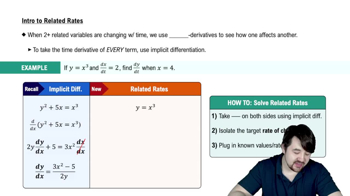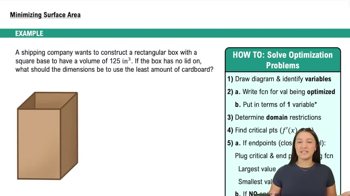Draining a tank Water drains from the conical tank shown in the accompanying figure at the rate of 5 ft³/min.
a. What is the relation between the variables h and r in the figure?
<IMAGE>
 Verified step by step guidance
Verified step by step guidance Verified video answer for a similar problem:
Verified video answer for a similar problem:



 4:16m
4:16mMaster Intro To Related Rates with a bite sized video explanation from Patrick
Start learning